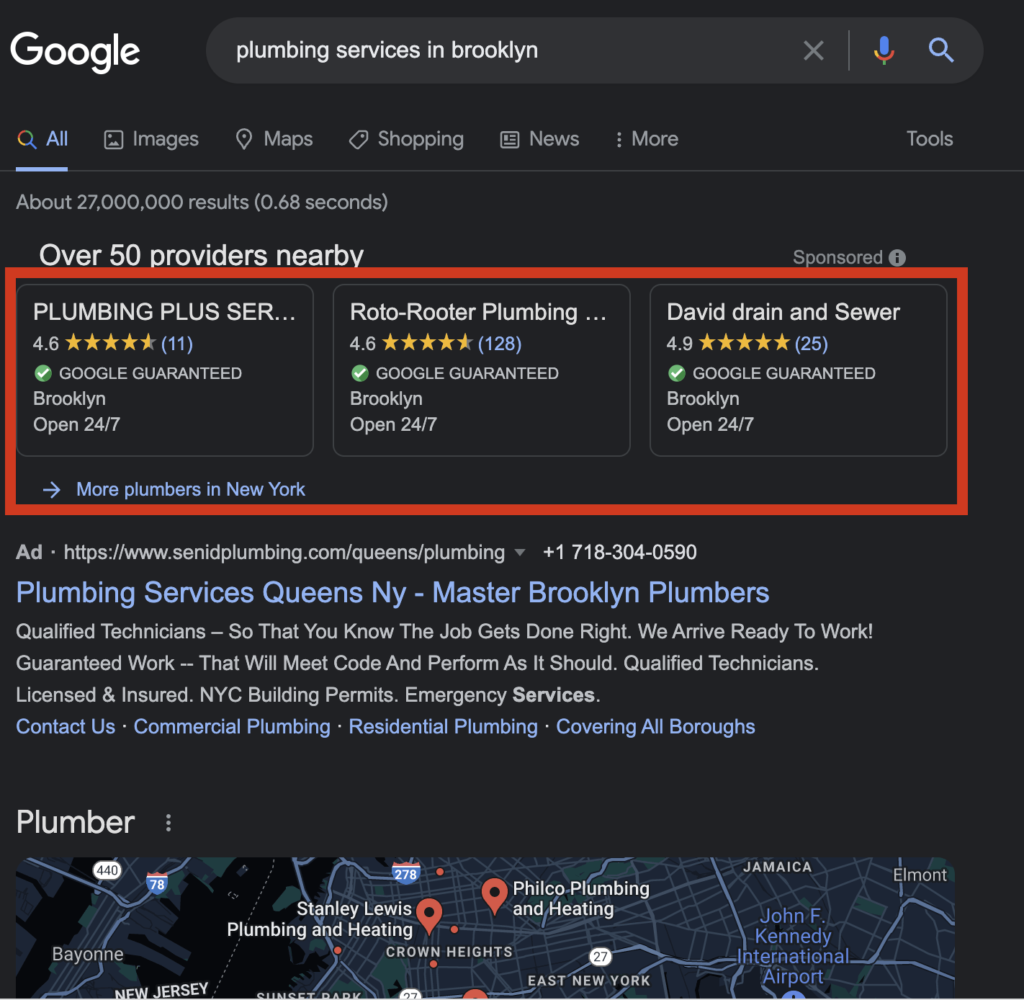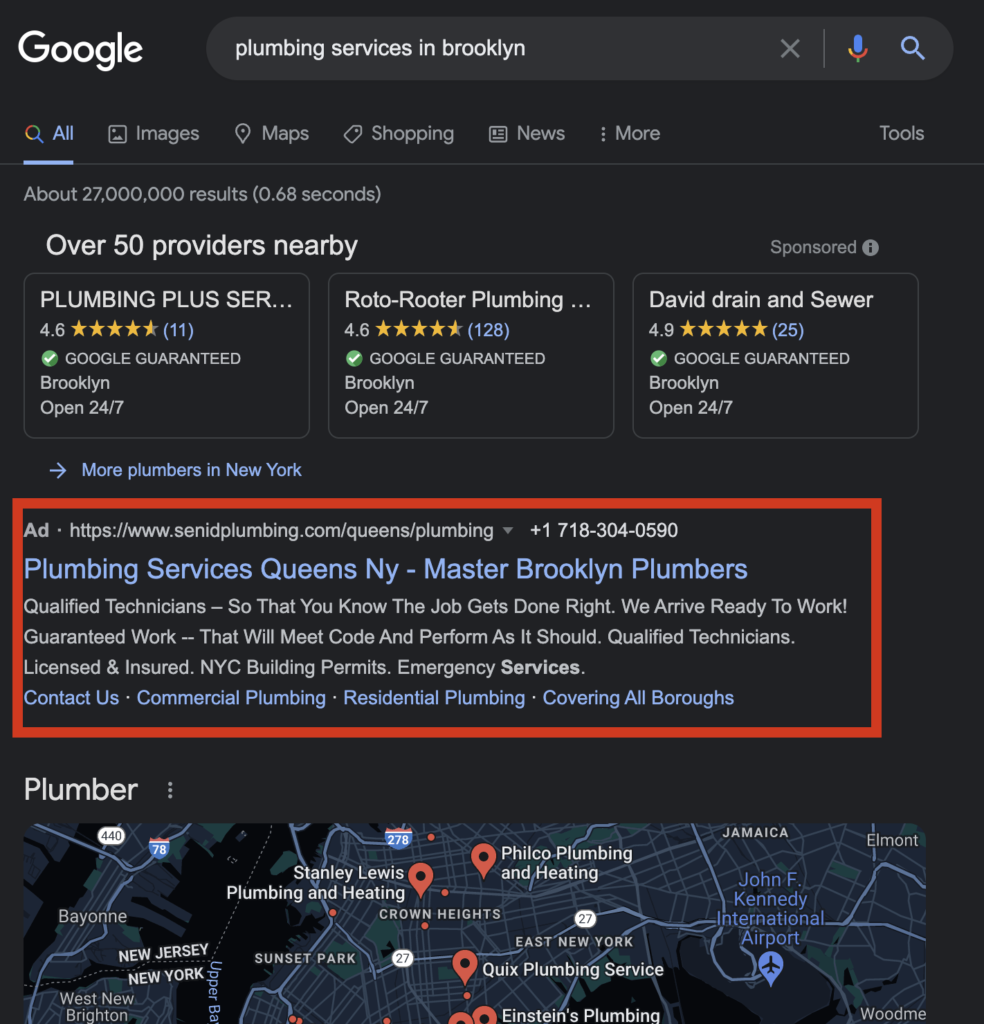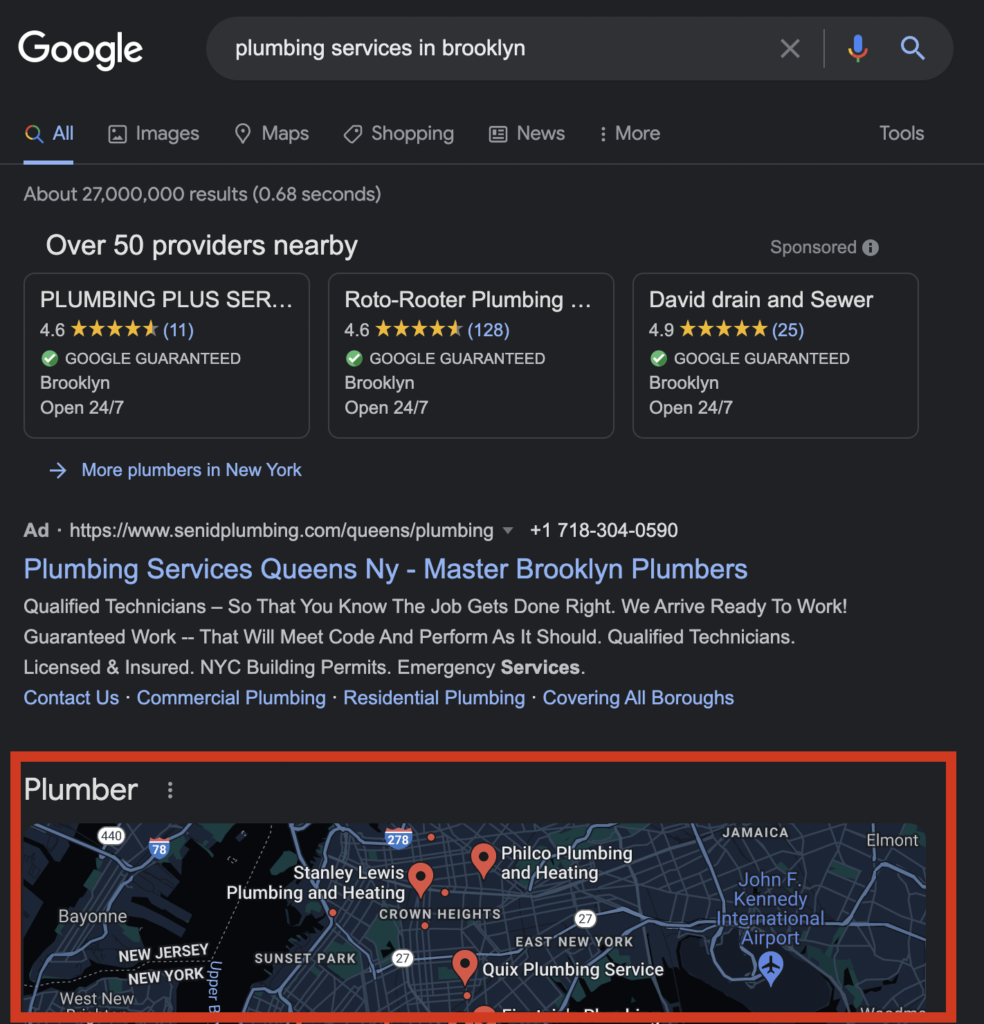If you search for tips on how to do SEO for small businesses, you will often see suggestions like how to “find the right keywords” or “create a Google My Business listing.” Tips like these are great, but many articles forget to mention two essential starting points: conversion and search intent.
Start with the End in Mind
When doing SEO for your small business, your number one goal is to get the right people to your website. In my ten years working with various websites, I often come in after the client was dissatisfied with the work of a previous SEO specialist or agency. One of the most common problems I see with the work of the SEOs who came before me was their emphasis on traffic. They often highlight in their reports the amount of traffic the website had without asking if they are getting the right people to the website.
As a small business, your focus should be on conversion from day one. By having this approach, you will know what to do with the traffic you get. You will also have an early start in measuring the success rate of your conversion tools such as your landing page and lead generation forms.
Let’s begin by with the benefits of this approach to SEO.
The Benefits of Conversion-centric SEO
Doing SEO this way is efficient
When doing online marketing, some of the strategies you will implement will work while others will fail. The key is to start implementing and measuring results as soon as possible. You could then stop campaigns and strategies that aren’t working.
By keeping conversion at the top of your mind, you will measure results from the beginning. You will easily identify campaigns that are getting results and end those that are just draining your small business’s resources with nothing to show for it.
You can start with low-competition niches
When using this approach, your SEO activities will be focused on attracting the right people with a specific set of needs. For example, a local car repair shop may limit its digital marketing reach to its business’s serviceable areas. The SEO of this business could remove all the noise in data collection and analysis by focusing only on the impressions and clicks from these specific locations.
This approach allows you to avoid strong competition. By focusing your efforts on these locations and marketing niches, you will be able to set your business apart from the big players out there with massive digital marketing budgets.
For example, you can use the “near me” feature in Google to make your business stand out:
This Approach is Focused on the Bottom Line
For small businesses, every penny matters. Measuring conversion from day one will help you measure your SEO’s ROI. Let’s say a construction company paid $6,000 for SEO services for the year. Over that period, the company got 30 paying clients from their website sign-up page. Using simple math, we can say that the company paid $200 for every client they got from organic search. Of course, this computation assumes that the company is not using any other marketing channels to drive the 30 paying clients to the website.
The construction company will then need to compare this spending to the lifetime profits from these customers. If the construction company, for example, could earn $1,000 from each client within the year, then we could say that the SEO effort is worth it.
With your own small business, you may want to start by focusing your SEO on the products or services with the highest return on investment. It makes more sense to start attracting customers to these products because they will have the biggest impact on your bottom line.
Define what Conversion is for You
Getting enough traffic is great. But you know what’s even better? Getting more sales.
Here at Conversion Coast, before we start working on a website, our team first establishes with the clients what their goals are for their business website. You want to start establishing your goals before you start changing anything. In fact, this is where you want to start when planning your entire digital marketing strategy.
Every SEO decision you make on your website should be based on that goal. The keywords you choose, the content you create, and the conversion features you choose to add to your website should be based on your business goal.
Leads Vs. Sales
The first thing you want to do is choose whether to collect leads or get sales directly from your website. If you already have a business running, you should be able to easily choose between the two.
Optimizing for Product Sales
A business that sells products that can be delivered to customers needs an eCommerce feature on the website. You should have a product page, set processing pages, and a thank-you page in the end. The product page can be optimized for search marketing. Using Product Structured Data, we can make this type of page stand out in search result pages. Lastly, you can put your preferred campaign tracking code on the thank-you page. This will allow you to measure the conversion rate of traffic that comes from search engines.
Optimizing for Leads
On the other hand, a business that offers a service likely needs to collect the contact details of your website visitor. To do this, you will need lead generation forms on landing pages that send collected data directly to your sales team’s CRM.
Your SEO efforts will focus on feeding traffic to these landing pages. This should work together with other marketing strategies you may also be implementing.
Identify your Target Audience
Next, let’s talk about who you want to attract to your website. SEO is all about knowing your business’s target audience. Knowing your audience will guide your decision on what keywords to use and what types of content pages to create.
A good starting point is to learn about the details of people who are likely to become your customers. You want to make educated guesses to answer the following questions:
- Who are the decision-makers when it comes to buying your products/services?
- Where are they physically located?
- What personal or business problems are these decision-makers trying to solve by buying your product or hiring your services?
- Are your products/services geared toward men, women, or businesses?
- Are your products/services considered a bargain or a luxury by your target audience?
- What age groups are your target audience?
- What websites are they likely to visit?
These are just a few questions that you can answer to create a clear understanding of your target audience. Using the answers to these questions, you can design your content strategy to fit their needs.
Keyword and Topic Research: Thinking like a customer
Now, you will need to put yourself in the shoes of a customer looking for the type of products or services you offer. Specifically, you want to imagine how they would use Google to search for the product/service they need.
Think of a phrase that one of your customers may use on search engines to look for your services. Here are some examples of search query word combinations that you can use to come up with phrases for your small business:
[Service name] + “near me”
[Service name] + [Name of City]
“Best” + [service name] + “near” + [Name of City]
Explore the SERP
In SEO lingo, SERP means Search Engine Result Pages. Studying the result pages for the topics and keywords you are targeting will give you insights into the type of content that people are looking for, and the quality of the web pages that you are competing against.
Use your website’s target phrases on the search engines to study the competition. When doing this, focus on the type of pages shown in the search engine result pages. For example, this is what you may see above the fold when searching for the term “plumbing services in Brooklyn.”

In this stage, there are two factors that you need to consider when deciding whether to go after a keyword or not:
- Search Intent – Search intent refers to the type of content that the search engine user expects when they use the phrase. In this case, the search intent is to explore businesses or brands located in specific locations.
- Competition Strength – More importantly, you want to gauge the difficulty of ranking in this search query based on the competition. To do this, examine the search result page and check what types of content are being served.
If you are planning to target this search query, you now have an idea of the businesses you are up against. For the sake of this article, let’s analyze the contents above the fold.
First, we have a suggestion for three businesses with a Google Guarantee check on them. A business that wants to rank on Google for this phrase or anything related to it will want to be among these suggested businesses.

Note: To be a part of the Google Guaranteed suggestion, you need to be a part of the Google Partner’s program. This means you have to pay for advertising.
Below that, we have the standard Google Search text ad. If you want to take that spot, you will have to start a search campaign in Google Ads.

And lastly, we have a map of Brooklyn indicating locations of plumbing services in the city.

Talking about business economics, this is the low-lying fruit for a business trying to rank for this search query. To put your pin on that map, you want to create a Google My Business listing with the correct business address and contact information. Since this does not require an additional budget (unlike ads) to show up above the fold, this task should be at the top of your SEO to-do list.
Now, you want to do the same using mobile. You want to know what people see when they search on a smaller screen. Some of these results cannot be served on mobile devices. In most cases, you will just see more text ads above the usual organic search results.
SERP Analysis
Ranking for the phrase “plumbing services in Brooklyn” will require a small business to become a part of the Google Guaranteed program. The second place is an ad. This means that you have to buy ad placements from Google. If a business is not willing to pay for an ad campaign, it may not see its pages served above the fold in the SERP. It may be better off targeting phrases with fewer ads served.
If the mobile search result page is yielding fewer ads, then it may still be worth the effort to rank in this query.
Use Google Suggest to Learn What Users May Click On

